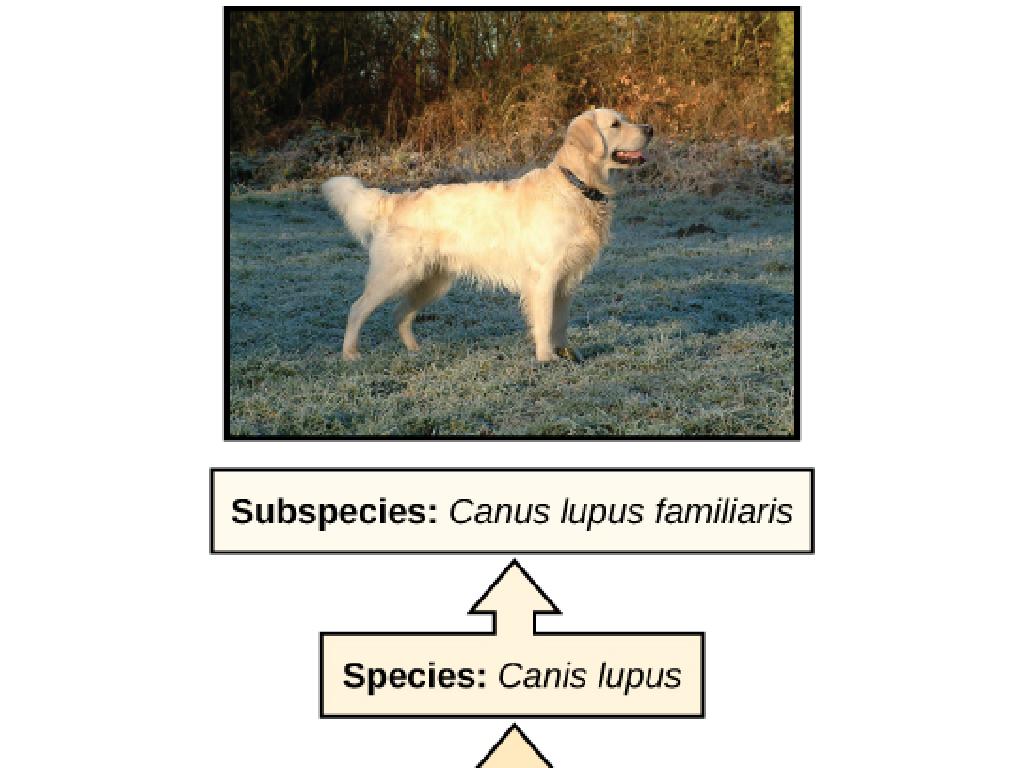Construct Explanations Of Natural Selection
Subject: Science
Grade: Seventh grade
Topic: Adaptations And Natural Selection
Please LOG IN to download the presentation. Access is available to registered users only.
View More Content
Adaptations and Natural Selection
– Species adaptation to environments
– Adaptations are traits that help survival and reproduction.
– Introduction to natural selection
– Natural selection is nature’s process of choosing beneficial traits.
– Significance in life science
– Understanding these concepts is key to grasping evolution and biodiversity.
– Examples of natural adaptation
– The peppered moth’s color change due to industrial pollution is a classic example.
|
This slide introduces the fundamental concepts of adaptations and natural selection, which are crucial for understanding evolutionary biology. Adaptations are various traits that organisms develop over time to survive and reproduce in their specific environments. Natural selection, a term coined by Charles Darwin, describes the process by which advantageous traits become more common in a population. These concepts are foundational in the study of life science as they explain the diversity of life and the process of evolution. Use examples like the peppered moth to illustrate how environmental changes can lead to a shift in population traits over time. Encourage students to think of other examples where animals or plants might have adapted to their surroundings.
Understanding Adaptations in Nature
– Define biological adaptation
– An adaptation is a trait shaped by natural selection that increases an organism’s chance of survival and reproduction.
– Examples of adaptations
– Physical: Camouflage in chameleons. Behavioral: Migration of birds. Both help organisms survive in their environments.
– Adaptations’ role in survival
– Traits that improve survival are more likely to be passed on to the next generation.
– Discuss adaptation significance
|
This slide introduces the concept of adaptations, which are characteristics that have evolved over time to help organisms survive and reproduce in their environments. Emphasize the difference between physical adaptations, like the camouflage of a chameleon, and behavioral adaptations, such as the migratory patterns of birds. Discuss how these adaptations can give organisms an advantage in their specific habitats, leading to a higher chance of survival and the continuation of their species. Encourage students to think of other examples and consider how each adaptation might have evolved in response to environmental pressures.
Natural Selection Explained
– Charles Darwin’s role
– Darwin was a naturalist who formulated the theory of natural selection.
– Principles of natural selection
– Natural selection drives evolution by selecting traits beneficial for survival.
– Key factors: variation, inheritance
– Organisms vary in traits; these traits can be inherited by offspring.
– Time’s impact on selection
– Over generations, traits that enhance survival become more common.
|
This slide introduces the concept of natural selection within the broader topic of adaptations and natural selection. Begin with a brief biography of Charles Darwin, emphasizing his contribution to the theory of evolution through natural selection. Explain the basic principles of natural selection, ensuring students understand that it is a natural process that leads to the evolution of species. Discuss the importance of variation among individuals in a population, the inheritance of traits, the role of selection where the environment ‘chooses’ the best traits, and the necessity of time for these changes to impact a species. Use examples like the peppered moth during the Industrial Revolution or antibiotic resistance in bacteria to illustrate these concepts.
Natural Selection in Action: Darwin’s Finches
– Explore Darwin’s finch case study
– Darwin observed finches on Galapagos Islands with varied beak shapes.
– Adaptation of finches’ beaks
– Beak shapes changed over generations to suit available food sources.
– ‘Survival of the fittest’ concept
– Finches with beak shapes that were well-suited to their environment survived longer.
– Reproduction of best-adapted finches
– These finches were more likely to reproduce, passing on advantageous traits.
|
This slide introduces the concept of natural selection through the case study of Darwin’s finches. Highlight how Darwin’s observations of finch populations on the Galapagos Islands led to the theory of natural selection. Explain how variations in beak shape, suited to different food sources, affected survival rates and reproduction. Emphasize that ‘survival of the fittest’ refers to the survival and reproduction of organisms best adapted to their environment. Encourage students to think about how these principles apply to other species and in different environments.
Constructing Scientific Explanations of Natural Selection
– Steps to construct a scientific explanation
– Identify the question, form a hypothesis, and predict outcomes.
– Use evidence to support explanations
– Gather data from experiments or observations to justify your hypothesis.
– Group activity: Construct an explanation
– Work in groups to explain how a trait in animals can lead to better survival.
– Share and discuss explanations
– Present your group’s explanation to the class for feedback.
|
This slide introduces the process of constructing scientific explanations, emphasizing the importance of using evidence to support claims. Students will learn the steps involved in formulating a hypothesis, making predictions, and gathering data. The class activity will involve students working in groups to apply these steps to a scenario related to natural selection, where they will construct an explanation for how a specific trait can improve an organism’s chances of survival. Afterward, groups will share their explanations with the class, allowing for discussion and peer feedback. This exercise will help students understand the critical thinking and evidence-based reasoning that underpin scientific explanations.
Activity: Simulating Natural Selection with ‘Beak Buffet’
– Engage in ‘Beak Buffet’ class activity
– Use tools to represent different bird beaks
– Tweezers, straws, and spoons mimic beak types
– Observe beak shape’s role in feeding
– Some tools are better for picking up certain ‘foods’
– Discuss survival implications
– Birds with advantageous beak shapes are more likely to survive and reproduce
|
In this hands-on activity, students will use various tools to simulate how birds with different beak shapes compete for food. Provide a mix of ‘food’ items (e.g., marbles, rubber bands, paper clips) and tools (tweezers, straws, spoons) to represent different beak types. Students will attempt to gather as much ‘food’ as possible, reflecting on how the shape of their ‘beak’ affects their ability to collect food items. Discuss how birds with beaks better suited to their environment are more likely to survive and pass on their traits, illustrating the concept of natural selection. Possible variations of the activity could include changing the ‘food’ types or environmental conditions to show how birds must adapt to survive.
Reflection on Natural Selection
– Insights from ‘Beak Buffet’ activity
– ‘Beak Buffet’ showed different beaks’ advantages in food selection
– Natural selection’s role in adaptation
– Organisms with favorable traits survive and reproduce
– Significance of species adaptation
– Adaptation ensures survival in changing environments
– Class discussion and reflection
|
This slide aims to consolidate the students’ understanding of natural selection and its impact on species adaptation. Begin by discussing the ‘Beak Buffet’ activity, where students learned how different bird beak shapes are advantageous for selecting specific types of food, simulating survival of the fittest. Explain how natural selection favors organisms that are best suited to their environment, leading to the prevalence of beneficial traits. Emphasize the importance of adaptation for the survival of species, especially in the face of environmental changes. Encourage students to share their thoughts and understanding, fostering a collaborative learning environment where they can reflect on the concepts learned.
Homework: Animal Adaptations & Natural Selection
– Choose an animal to research
– Identify its unique adaptations
– Look for physical or behavioral traits that help survival
– Explain adaptations via natural selection
– How did these traits likely develop over generations?
– Share your findings in class
|
This assignment encourages students to explore the concept of natural selection by researching a specific animal. They should look for adaptations, which are traits that increase an organism’s chance of survival and reproduction. Students should consider how these adaptations might have evolved over time due to environmental pressures, leading to the survival of the fittest. In the next class, students will present their research, which will help reinforce their understanding of natural selection and allow them to see a variety of examples across different species. Provide guidance on research sources and remind them to cite their references.






